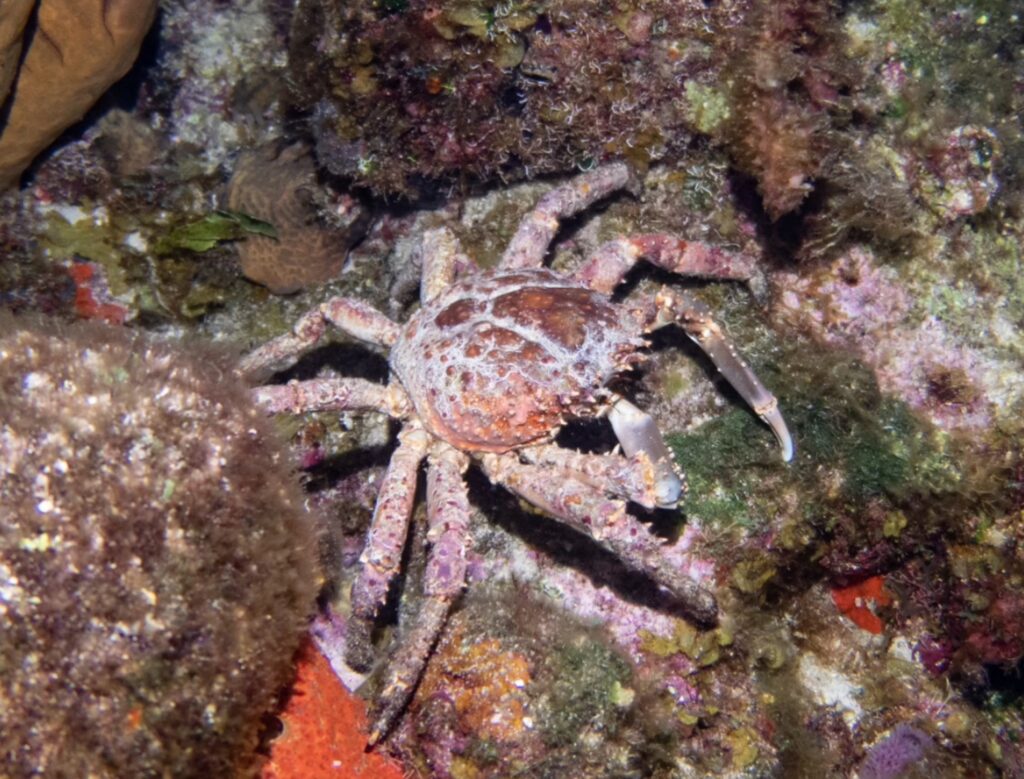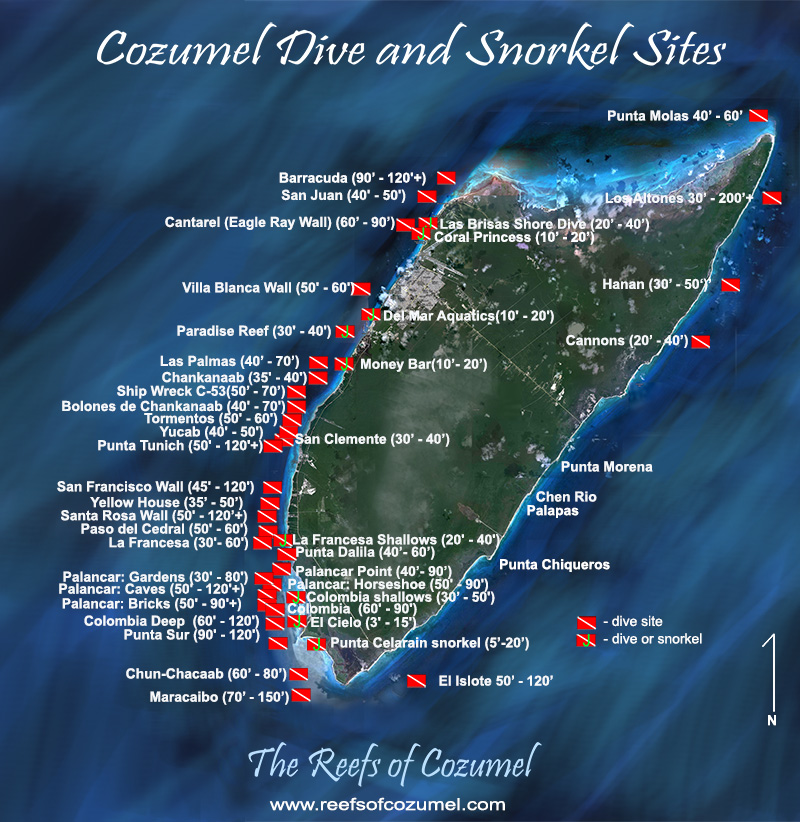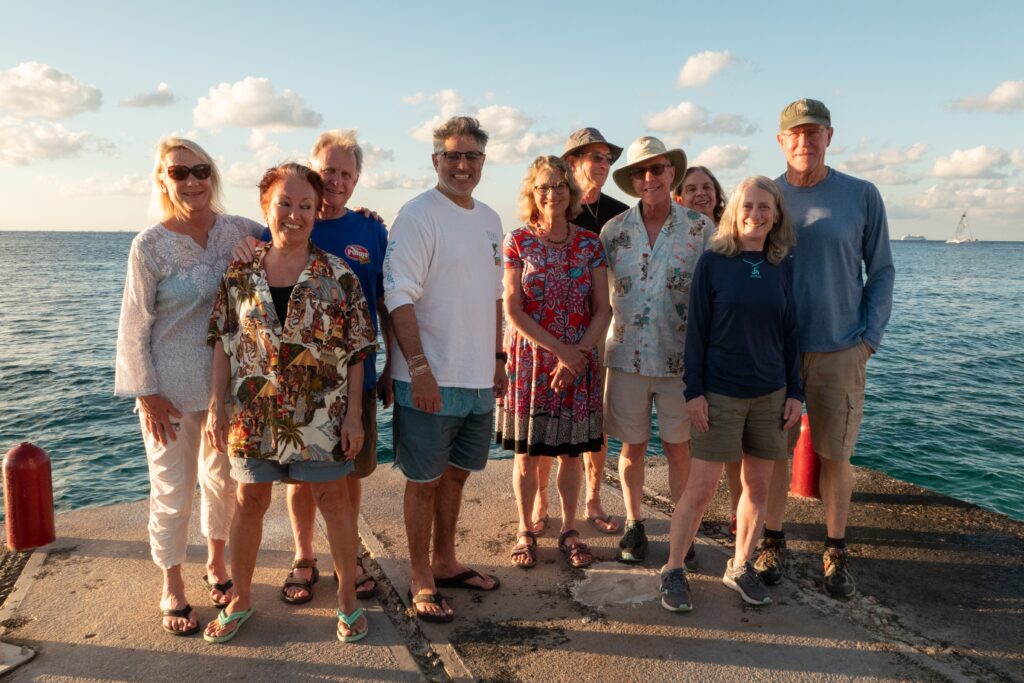I’ve done a variety of drift dives in my underwater life and each of them has offered different challenges.
For example, in the Channel Islands off Santa Barbara, California, I finned through medium to strong currents, with afternoon winds making it more challenging. In Hawaii, the currents are caused by strong surface trade winds that generate upwelling. Throughout the Caribbean, currents are generally not an issue, though they’re always a possibility. In Australia, the currents can be treacherous or they can be calm.
However, when you dive in Cozumel, Mexico, encountering currents is pretty much a given. In fact, virtually all dives here are drift dives.
Located about 12 miles east of Playa del Carmen, Cancun, currents around this popular Mexican resort island can run from mild to moderate (1-6 knots) on most reefs , so it can be a beautiful, soaring experience or it can unpredictable and wildly turbulent. Of course, the strength of the currents depend on the day you dive, the time of day you dive, the time of year, weather patterns, et.al.
A Few Tips For Dealing With Current.
You have to be a confident, skilled diver to “go with the flow”. A few tips I learned in these fast-moving waters:
- Always have a divemaster recognize the currents for you or your group.
- Enjoy the ride, but stay towards the bottom to minimize the strength of the currents.
- Look for coral outcroppings to minimize your exposure.
The First Dive, I Ended Up Furthest From The Boat.
On my first Cozumel dive in January, 2023, my dive buddy and I explored Punto Dalila Reef at 40-60 feet and 80-100’ visibility.
Because of the currents, we surfaced about 100 yards from our boat. The seas were choppy, so we inflated our BCs, he filled his safety sausage, and waved it side-to-side. After the captain acknowledged our position, we kicked backwards towards the approaching boat. Within minutes, we were angling towards the stern, grabbed the ladder, removed our fins, and climbed aboard.
Our group of ten repeated this drift diving protocol on five two-tank morning dives out of Scuba Club Cozumel. On all of the other ascents, our boat was usually within 50 yards of where we surfaced, but we often noticed up to 12 vessels awaiting divers at most sites because this was prime time for tourists.
This video by a dive club buddy gracefully illustrates the feeling of drifting underwater.
Cozumel Drift Diving Highlights.
Experienced divers know that in any locale, you should always expect the unexpected. Here are a few sightings that amazed us:
- San Francisco Wall offered 200’ visibility and very little current. As we drifted along a healthy coral wall, we saw angelfish, parrotfish, grunts, and groupers; spotted moray eels; and the largest eagle ray we’ve ever seen. Because of its size, I first thought it was a manta.
- Paradise Reef during a full moon night dive enabled us to be extraordinarily lucky to experience virtually no current. We saw five octopi in the open water, 8 large crabs feeding, squid, toadfish, sleeping parrotfish, nurse sharks, moray eels, and a sea snake. It was a virtual shellfish buffet!
- At La Francesca, a strong current swept us along as we spotted green morays, nurse sharks, grunts, sergeant majors, and angelfish. But a lobster larger than a small puppy (3’ long and 2’ high) could have been our dinner. Though I tried approaching it with a cup of clarified butter, it waddled away.
- Palancar Reef: Horseshoe offered 82-foot depth with several coral swim throughs, plus turtles, barracudas, moral eels, and tons of fish. Great dive!
The Bottom Line.
Drift diving, especially in Cozumel’s great visibility, is a terrific way to explore reefs. But if you’re more comfortable in calm, clear waters, it may not be for you.







Comments are closed.